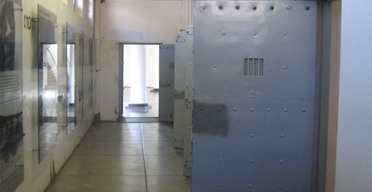NAIROBI, August 22 – The conference room we were about to use for the workshop was once a delivery room for black female prisoners in Number Four. Not many people I asked knew why that particular jail in Johannesburg’s Constitution Hill was called ‘Number Four’, but the speculation referred that it was just one of the many ‘numbers’ of prisons across the South African State.
Not very fancy; you might think, but for the fact that Nelson Mandela’s ex-wife Winnie was once housed there and many other factors I found out about that make it hard to ignore.
I was groggy when I got to Constitution Hill that Tuesday morning. It was chillier than I had expected and I had the faraway makings of a bad cold. My first time in South Africa, and I wasn’t liking it quite as much as I had anticipated! Ok, it was only a few hours since I’d jetted in from Nairobi but, bummer!
The conference room was still being cleaned and so I idly followed the rest of the workshop participants through this neat, quaint building. A run of prison doors on the left caught my attention. Huh? Why are there cells here? What was this place?
I soaked in the brief tour our facilitators offered. The floor was cemented, and looked cold. There was a small corridor lined with four light-blue prison doors on the left, complete with a grilled peep-window near the top. Directly opposite the doors were dramatic heart-wrenching pictures of sad-looking women and people being beaten up.
The doors were slightly ajar, and looking in, I could see small television sets attached to metal bars that hung from the ceiling. They showed videos of women narrating harrowing ordeals at the hands of warders in this prison – on repeat.
Number Four. Why was it being documented? What was so special about these prisoners, I wondered to myself.
It was at least two hours before I could ask one of our facilitators, Nthatheng, to tell me a bit about this reformatory and what it meant to her.
“It’s just a prison. I don’t know anyone who was here. Maybe if I did it would mean something to me. Several of the people who were incarcerated here probably deserved it. I mean, maybe they had killed or stolen, no? This is of course aside from the political prisoners who were jailed for being vocal. I can find out more about it for you if you want?” She offered.
I didn’t follow it up, because I wasn’t sure what I was looking for. That afternoon, I dedicated my time to finding out more about this still but moving place. There are quotes etched on metal boxes, quotes written on doors and each was strong enough to knock the wind out of your sails.
By the end of the day, I had picked up a good sum of a dark past that those housed in Number Four had faced – a dark, excessive and unreasonable past.
The conference room was only intended for black female prisoners to have their babies mid-wifed by a house doctor. The white prisoners were taken to a nearby hospital.
The quote on the door of the room read “My son was born here, and it has affected him forever.”
Other quotes narrated how black prisoners, even those nursing new born babies, would have to stand to attention and raise their hands when a prison warder showed up in their crowded cells; failure to which you would earn yourself a savage beating. The white inmate new mothers, meanwhile, would return to the prison when they were ready.
The mere thought of that baseless inequality made me feel raw and painful. But here it was in front of me. I wondered if those who were affected could even muster a glance at this ugly memory.
The videos and quotes were an effort by the South African government and several other institutions to try and help the country come to terms with part of their painful past and move on.
I’ve read stories about racism and apartheid in the South. The struggle for equality and the surface tension that refuses to go away. So this merger of past and present South Africa amazed me with its cringing courage.
I looked at the little garden, where the female inmates came out for ‘one hour of sunshine’ every day and looked at the droves of young school students and adult professionals who would pass through on the numerous tours, and felt a deep respect.
Next to this piece of art are two other prisons and the constitutional court. The court stands beside the black men’s jail cells. Over the hill is the white section – the Old Fort. The only black man who was housed there was Nelson Mandela, because they were afraid that he would stage an escape from the black inmates’ facility.
The Old Fort has a cute little café planted in a field that looked like the prison roll calls may have been conducted there. It had a few little tables and a Caucasian couple was having lunch there as we passed. In the several different rooms that may have been prison cells, there was an exhibition symbolically trailing the tough lives lived by four people: a gay priest, a lesbian, a man who had a sex change, and a gay student who came to live in South Africa.
I felt like anyone with pain should have been there to stare it in the face and try and make friends with it.
What is left of the female section of Number Four encompasses a two-storey circular hall, with jail cells at the top and bottom floors. The top level corridor has glass cases displaying the prisoners’ and warders’ uniforms – complete with shoes, dress, belt, hat and rungu.
In the cells were neatly folded blankets with any paraphernalia that had been used by the inmates. The cell was a tiny rectangular room with a meshed window about 4/5s to the top of the white walls. That was the black section.
The white section faced the garden, had more space and better-looking blankets. The windows were bigger and there were letters that had been written to and by them. I saw a smile on one of their faces.
Nthatheng was also smiling as she smoked her cigarette. Even the kids were smiling as they played and joked with each other away from their teacher’s and tour guides ear-shots. I was loving it.



































